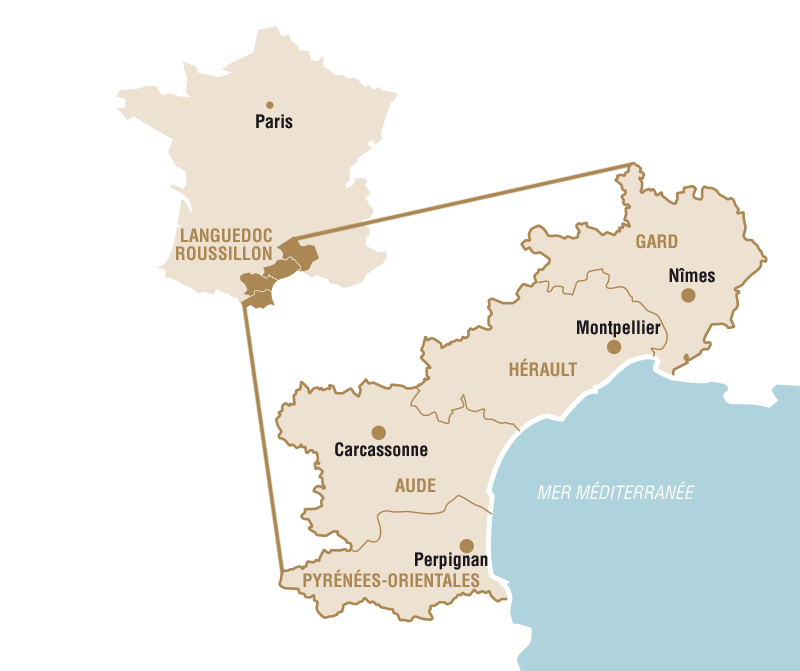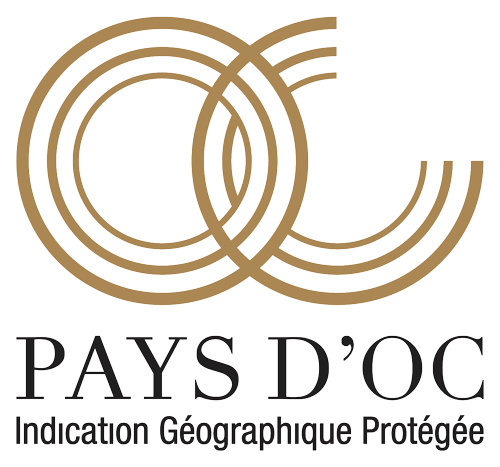58 outstanding grape varieties
IGP Pays d'Oc varietal wines: home to 58 grape varieties
Grown between the Mediterranean Sea and the mountains, IGP Pays d’Oc varietal wines cover an extensive, sun-kissed region, from the Camargue to the Vermilion Coast, in the heart of France’s largest wine region, also renowned for its appellation wines.
IGP Pays d’Oc varietal wines first emerged in 1987. They illustrate a desire by Languedoc-Roussillon winegrowers to get their creative juices flowing by producing, within the same region, appellation wines subject to blending rules, and Vins de Pays (now IGP) offering greater freedom of association thanks to a range of 58 varietals. There are two categories of Vins de Pays d’Oc IGP products:

The region, the grape varieties and quality are at the crux of IGP Pays d’Oc wines. In this video, the young, self-assured Pays d’Oc generation illustrates the essence of the Pays d’Oc Protected Geographical Indication.
Freedom of expression for varietal wines
The freedom afforded by the innovative concept of varietal wines has become a magnet for nearly 20,000 winegrowers in Languedoc and Roussillon, within the extensive Occitania region, during the endorsement’s thirty-year history. Working as both independent and co-operative wineries in all four departments – Hérault, Gard, Pyrénées-Orientales and Aude – and six localities in Lozère, the winegrowers get their creative juices flowing, taking the expression of their wines into uncharted territory, outside the boundaries of appellation wines.

One wine region, three different influences
The character of IGP Pays d’Oc varietal wines is closely linked to Pays d’Oc’s sunny Mediterranean climate. Shaped like an amphitheatre opening onto the Mediterranean Sea, it arches around the 200 kilometres of coastline formed by the Gulf of Lions, from Nîmes via the Camargue and the Vermilion coast to the Spanish border. To the North, the chain of mountains formed by the Pyrenees and to the East, the foothills of the Cévennes define its borders. Stretching over 120,000 hectares, the wine region is divided into three zones of influence: the maritime plains along its coastal area; the lowlands and rolling hills or ‘soubergues’; and lastly the high altitude vineyards.
The incredible diversity of soils found here stems from the area covered by the Pays d’Oc wine region: they range from sandy soils along the coast to limestone, schist, clay or gravelly pebbles along the valley floors and hillsides. This mosaic of terroirs gives the 58 grape varieties permitted under the Pays d’Oc designation myriad means of expression.
One wine region, three different influences
The character of IGP Pays d’Oc varietal wines is closely linked to Pays d’Oc’s sunny Mediterranean climate. Shaped like an amphitheatre opening onto the Mediterranean Sea, it arches around the 200 kilometres of coastline formed by the Gulf of Lions, from Nîmes via the Camargue and the Vermilion coast to the Spanish border. To the North, the chain of mountains formed by the Pyrenees and to the East, the foothills of the Cévennes define its borders. Stretching over 120,000 hectares, the wine region is divided into three zones of influence: the maritime plains along its coastal area; the lowlands and rolling hills or ‘soubergues’; and lastly the high altitude vineyards.
The incredible diversity of soils found here stems from the area covered by the Pays d’Oc wine region: they range from sandy soils along the coast to limestone, schist, clay or gravelly pebbles along the valley floors and hillsides. This mosaic of terroirs gives the 58 grape varieties permitted under the Pays d’Oc designation myriad means of expression.










